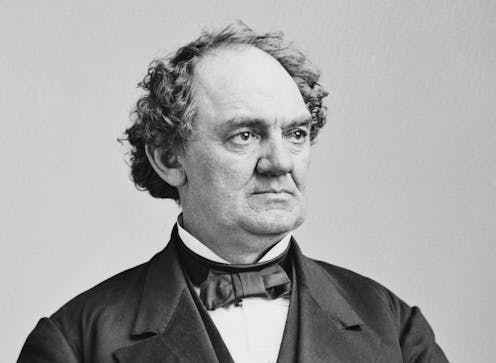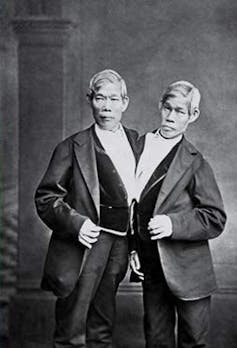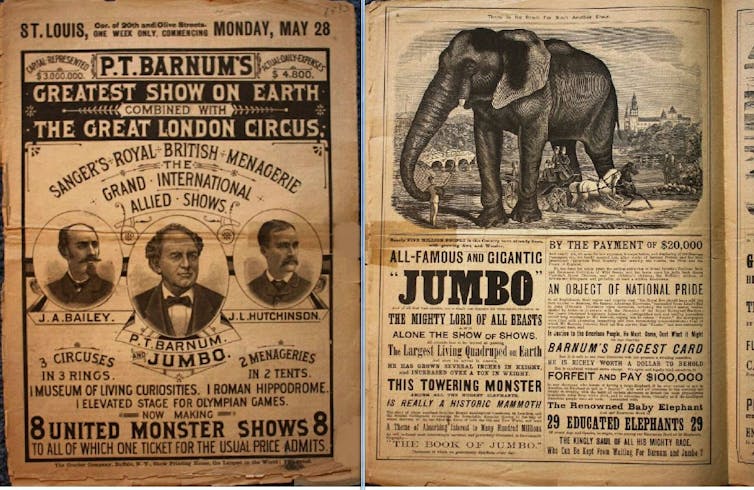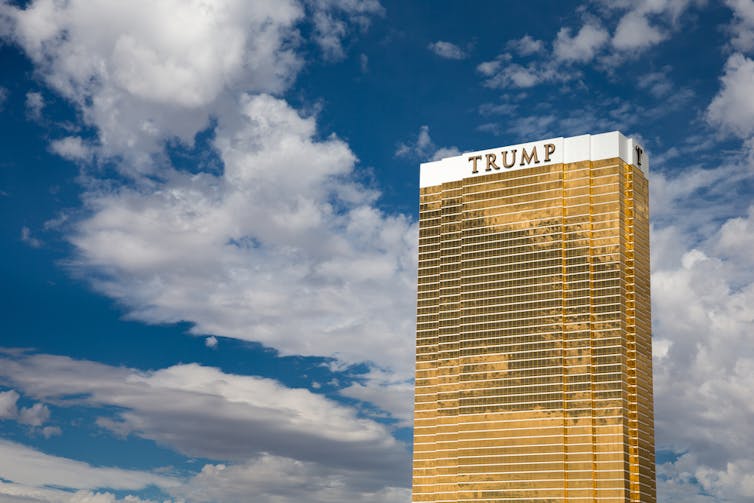How the 'Greatest Showman' paved the way for Donald Trump
It's impossible not to see the ghost of P.T. Barnum in our culture, in our advertisements and in our president.

Historian James Cook, in his 2001 book “The Arts of Deception,” points to July 1835 as “the birth date of modern American popular culture.”
That month, a frustrated grocer named Phineus Taylor Barnum purchased Joice Heth, a purported 161-year-old slave who had been George Washington’s nanny.
Barnum furiously promoted her as “Absolutely the Greatest Natural and National Curiosity in the World.” It worked: Over 10,000 people saw her at New York City’s Niblo’s Garden during a two-week exhibition.
But while patrons gave testimonials assuring her authenticity, Barnum decided to muddy the waters: He wrote anonymous letters calling her “a deception cleverly made of India rubber, whalebone, and hidden springs.” The ploy challenged people to judge for themselves whether she was real or a hoax.
After Heth died in 1836, an autopsy was arranged to determine her age. A lesser huckster might have shrunk from the spotlight, fearing being exposed. Not Barnum: He charged customers 50 cents to observe the autopsy. (She ended up being around 80 years old.)
Now P.T. Barnum is the subject of a new musical biopic starring Hugh Jackman, “The Greatest Showman.” It’s a fitting moment to release a film featuring the country’s most famous impresario, entrepreneur and – some would say – scam artist.
Today, the country is gripped in a populist fervor, just as it was in Barnum’s time. Advertising – then in its infancy – now saturates all parts of our lives. And of course there’s the country’s new president, who’s one year into his first term. Barnum’s showmanship pulses through every fiber of Donald Trump’s political style.
Selling to the masses
In the 1830s, Jacksonian democracy was supplanting Jeffersonian elitism. The political movement challenging the existing social order in favor of the social, religious and aesthetic preferences of ordinary people, or, as composer Aaron Copeland later rhapsodized, “the Common Man.”
Acutely attuned to the times, Barnum wielded an extraordinary sense of what appealed to the masses. He rejected the country’s elitist culture, promoting a more egalitarian “pop” culture. “Nobody ever lost a dollar by underestimating the taste of the American public,” he would later write.
Barnum had a word for his style of showmanship: “Humbug,” the playful gulling of people for money. He claimed his audiences enjoyed being fooled by his ingenious deceptions. Although he never said “There’s a sucker born every minute,” his career (and fortune) hinged on this belief.
“The bigger the humbug,” he boasted in his 1854 autobiography, “the better the people will take it.” Barnum insisted that he limited his trickery to harmless scams solely to amuse people who, in effect, were in on the joke.
In 1841, he built upon the success of the Heth exhibition by opening the American Museum in Lower Manhattan. Displaying thousands of exotic oddities, human and otherwise, the museum would attract 38 million patrons between 1841 and 1865.

There was the Feejee Mermaid, a half monkey, half fish sewn together; the “Siamese Twins”; a bearded lady (actually a man); and his most famous oddity, the mysterious “Egress.” Patrons couldn’t wait to see what lurked behind what was, in the end, simply the exit door. (In today’s museums, the “Egress” leads to the gift shop.)
But Barnum’s most famous enterprise was “The Greatest Show on Earth,” the circus he developed with former rival James Bailey in 1881. To accommodate its hundreds of colorfully dressed performers and animals, he built an enormous tent featuring three giant rings and two stages.
The star of the show was an elephant named Jumbo. Its enormous size (over 13 feet tall, weighing over six tons), gentle disposition (rare in African elephants) and his “love of children” made Jumbo arguably the most popular attraction of Barnum’s 50-year career.
The art of the ad
While advertising and promotion existed before Barnum, the showman elevated the art to a new level.
Barnum was keenly aware of advertising’s power, preaching that “Advertising is to a genuine article what manure is to land – it largely increases the product.”
To promote the Feejee Mermaid, Barnum cited fake testimony from selected “scientists” authenticating its veracity. His flyers included drawings of bare-breasted mermaids, introducing sex into marketing.
Most newspaper ads of the time included a simple description of the product. Barnum’s featured brash typography, artwork, exclamation points and – especially – hyperbole and superlatives (“Perhaps there never was before in the world such an instance of extraordinary success as my Museum presents!”).

Barnum invented other advertising techniques. Huge banners covered the façade of his museum, while colorful paintings of himself adorned his privately owned circus train (think of the photos today’s politicians paste on campaign buses). He lined the roof of his museum with Drummond lamps as beacons – forerunners of the searchlights later used to bring attention to big events (and seen in the logo for 20th Century Fox).
And because they didn’t cost a dime, Barnum preferred promotions to paid advertising. For example, in 1850, he decided to bring star singer Jenny Lind, “the Swedish Nightingale,” to the United States for a concert tour.
Advance men breathlessly promoted it, holding raffles and poetry contests for free seats. They created a mythology for Lind: she was a one-time impoverished woman who became an orphan-supporting philanthropist.
By the time Lind arrived at New York’s harbor, a mass of 40,000 people greeted her, and her 93 concerts ended up netting Barnum over US$500,000.
Glory to his name!
As Barnum’s renown grew, he didn’t try to recede from the spotlight. Instead, he made his name central to his brand – one of the first self-promoters to explicitly tie his name to his product.
After fire destroyed the museum in 1865, he rebuilt it and placed “BARNUM” in enormous letters atop its five-story apex. Ads for his circus featured a woodcut of Barnum and “BARNUM! I AM HERE!” in large type, with “Greatest Show on Earth” in smaller print. Even Barnum’s personal letterhead proclaimed his glory: “The Sun of the Amusement World from which All Lesser Luminaries Borrow Light.”
The media rebuked Barnum’s braggadocio. Ralph Waldo Emerson groused in his journal that “men had rather be deceived than not; witness the secure road to riches of Barnum and the quacks.”
“I don’t care what they say about me,” Barnum countered, “as long as they spell my name correctly.”

Barnum’s shameless self-promotions became not only acceptable but expected. Today no one blinks when a boxer anoints himself “The Greatest,” when a country boy becomes the “King of Rock and Roll” – or when a boastful billionaire says he’ll be “the greatest jobs president God ever created.”
The ghost of Barnum
In 1956, psychologist Paul Meehl coined a term, “the Barnum effect,” to explain why people embrace objectively bogus claims. Essentially, if claims are phrased in positive (but vague) ways, they reinforce the predisposition of people to believe what they want to believe. To reduce the Barnum effect to its simplest premise: “Tell the customer what he wants to hear.”
It’s a talent at which the greatest showmen and admen excel, and Barnum-esque hyperbole now dominates modern advertising.
“Our biggest sale ever!” is a line dutifully deployed, by the same companies, year after year. Taco Bell’s quesalupa is “Bigger than everything,” while “awesome” is used for all things pleasing (along with “unbelievable” and “amazing”). In a trifecta of hyperbole, Brilliant Brunette Shampoo, for example, “adds amazing luster for an infinite, mirror-like shine.”
Jumbo the elephant lives on. His name describes products ranging from shrimp to mattresses to cereal boxes. Sports arenas boast of their massive digital scoreboards, or “Jumbotrons,” while Starbucks’s “regular” cup of coffee – the “Grande” – is a nod to Jumbo’s legacy.
Meanwhile, Donald Trump has his own words for humbugging: “truthful hyperbole.”
It’s “an innocent form of exaggeration,” he wrote in his 1987 book “The Art of the Deal,” “and a very effective form of promotion.”
It’s impossible to miss the Barnumisms (a popular term in his day) in the Trumpisms deployed during the candidate’s political rise:
“I have a Gucci store that’s worth more than [Mitt] Romney.”
“And we will build a big, beautiful wall!”
“I could stand in the middle of Fifth Avenue and shoot somebody and I wouldn’t lose voters.”
Barnum, according to historian Daniel Boorstin, was also “the master of the pseudo-event.” In 1843, the American Museum featured Native Americans that Barnum falsely claimed had killed white men out West. Provoking curiosity and fear in his customers, the exhibit was a hit.
Similarly, Trump has a tendency to create narratives out of thin air – whether it’s his claim that he saw American Muslims dancing on rooftops after 9/11 or that millions of illegal immigrants voted for Hillary Clinton. Like Barnum, Trump instinctively seems to understand that manufactured outrage, drama and intrigue work better than paid advertising. (After all, Trump famously received billions in free media coverage during the 2016 campaign.)
Looking at Barnum’s “yuge” impact on American culture – on entertainment, on advertising, on commerce – it’s almost surprising that it took so long for a showman to become president.
But alarm bells should have been going off all the way back in 1875.
That year, Barnum was elected mayor of Bridgeport, Connecticut.
Michael Greenwald does not work for, consult, own shares in or receive funding from any company or organization that would benefit from this article, and has disclosed no relevant affiliations beyond their academic appointment.
Read These Next
From truce in the trenches to cocktails at the consulate: How Christmas diplomacy seeks to exploit s
World leaders like to talk up peace at Christmastime. But alongside the tales of seasonal breaks in…
As DOJ begins to release Epstein files, his many victims deserve more attention than the powerful me
Powerful men connected to Jeffrey Epstein are named, dissected and speculated about. The survivors,…
The world risks forgetting one of humanity’s greatest triumphs as polio nears global eradication − 7
Polio may finally be defeated in the next 5 years. Will the world recognize what an extraordinary achievement…






